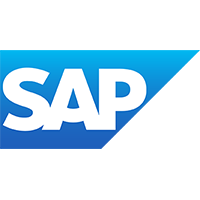
As part of Solutions Review’s Contributed Content Series—a collection of articles written by our enterprise tech thought leader community—Michael van Keulen, the Chief Procurement Officer at Coupa, explains the imperative of integrating procurement and supply chain departments and technologies.
 In modern business, synergy between procurement and supply chain leaders is no longer a choice but a necessity. Disruptions like a global pandemic, international trade barriers, political unrest, and rising inflation have all added tremendous pressure on supply chains to perform flawlessly despite added layers of complexity. Simultaneously, procurement teams are expected to drive more value and spending efficiencies at all costs.
In modern business, synergy between procurement and supply chain leaders is no longer a choice but a necessity. Disruptions like a global pandemic, international trade barriers, political unrest, and rising inflation have all added tremendous pressure on supply chains to perform flawlessly despite added layers of complexity. Simultaneously, procurement teams are expected to drive more value and spending efficiencies at all costs.
As a Chief Procurement Officer (CPO), I have always believed that aligning these teams to drive profitability, enhance agility, and foster improved communication between buyers and suppliers is critical for overarching business success and achieving strategic objectives. How can teams do this effectively? Let’s dive in:
The Relationship Between Procurement and Supply Chain
Historically, procurement and supply chain teams have suffered from a significant disconnect. Procurement teams were mostly focused on managing the spend, driving Requests for Proposals (RFPs), and strategic sourcing, often overlooking the intricate details critical to the supply chain, such as demand management, business continuity, and risk management. This led to issues with understanding lead times, quality specifications, risk mitigation, and forecasting—and the repercussions of this disconnect became glaringly evident during times of disruption and unprecedented events.
Breaking down barriers requires open communication and a willingness to understand the challenges faced by the supply chain and its objectives. In my experience, the first step in this collaborative journey should be initiated by the procurement teams. CPOs must take the lead in changing the narrative surrounding their function, creating an environment where collaboration, transparency, and teamwork become part of our DNA. CPOs can build trust and foster a more collaborative relationship with the supply chain by presenting procurement as a strategic partner invested in creating value, providing optionality and detailed award scenarios to the Supply Chain.
It’s also essential for procurement leaders to extend beyond the traditional focus on cost reduction and take a more holistic approach to strengthening business continuity via de-risking the supply chain and driving innovation. As businesses recognize the need to jointly optimize outcomes and align strategic goals for procurement and supply chains, they can foster greater profitability.
Embrace Digitization
Embracing the power of digitization is crucial for procurement teams looking to streamline cross-departmental processes. Digital transformation offers the means to deliver modern, consumerized experiences and facilitate effortless collaboration with trading partners. By leveraging technology, procurement gains real-time visibility into the supply chain, fostering informed decision-making, managing risk, and establishing a single source of truth for all.
Digitizing the procurement function involves implementing advanced tools and platforms that enable seamless communication and collaboration. Cloud-based procurement solutions can break down silos between procurement and supply chain, providing a centralized platform for data sharing and analysis. This improves efficiency and ensures that procurement is involved at the right time in the business processes, from innovation to strategic planning and budgeting to execution.
However, in tandem with procurement’s digitization efforts, artificial intelligence boomed in the past year. This couldn’t come at a more crucial time—organizations handle massive amounts of invoice data but often lack the resources to streamline their processes. AI enables companies to reduce reliance on manual, error-prone tasks and increase invoice processing speed by automating inputs for crucial information like address changes on invoices. While this may seem like a small detail, having the correct information for each supplier can be the difference between getting paid on time or two weeks late.
Develop Collaborative Tools
Businesses work with hundreds, if not thousands, of suppliers. Combined with the complexities of doing business internationally, this requires a collaborative digital network to scale and manage vendor information. Businesses and their suppliers have traditionally communicated through email. But the reality is things get lost via email, not to mention the risk phishing presents to business data.
A key way to fix this challenge? Supplier portals. When multiple users are engaged in a purchase order or invoice, it’s easier and more efficient to collaborate in a centralized network where all parties can work on the same item simultaneously. This reduces the risk of errors by reconciling purchase orders, invoices, and payments.
Supplier portals also allow for real-time updates to both procurement and supply chain teams on order status, inventory levels, payments, and more. This promotes transparency between buyers and suppliers, streamlines operations, and helps resolve conflicts quickly.
The evolving relationship between procurement and supply chain teams is a testament to the changing dynamics of the business landscape. By breaking down silos, adopting best practices in digitization, and focusing on optimizing value, businesses can create a unified path forward, ensuring resilience and success in an ever-changing world. In other words, the imperative integration of procurement and supply chain leaders is not just a strategic move but a fundamental necessity for the growth and sustainability of modern businesses.

 9 months ago
57
9 months ago
57
